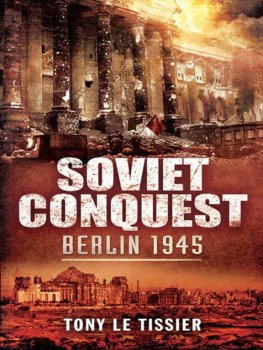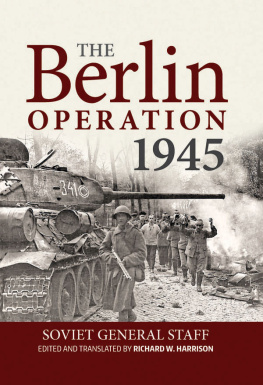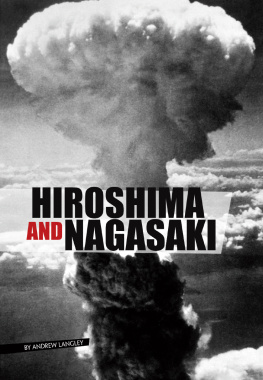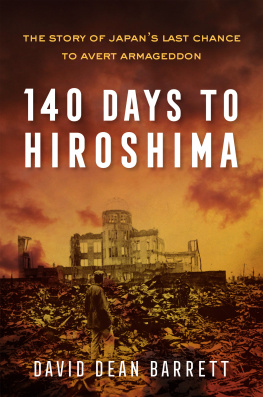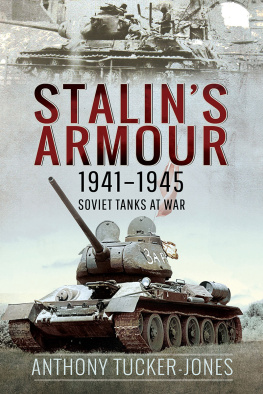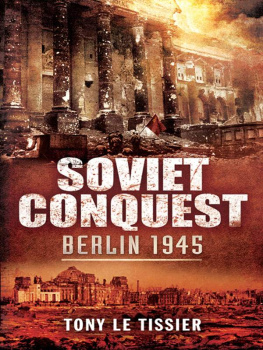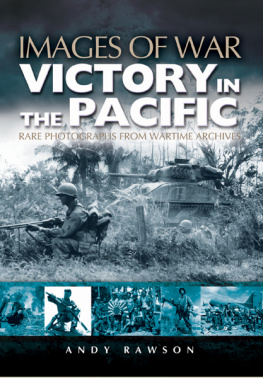Stalins War on Japan
Stalins War on Japan
The Red Armys Manchurian Strategic Offensive Operation, 1945
Charles Stephenson
First published in Great Britain in 2021 by
PEN & SWORD MILITARY
An imprint of Pen & Sword Books Ltd
Yorkshire Philadelphia
Copyright Charles Stephenson, 2021
ISBN 978-1-52678-594-7
eISBN 978-1-52678-595-4
Mobi ISBN 978-1-52678-596-1
The right of Charles Stephenson to be identified as the author of this work has been asserted by her in accordance with the Copyright, Designs and Patents Act 1988.
A CIP catalogue record for this book is available from the British Library.
All rights reserved. No part of this book may be reproduced or transmitted in any form or by any means, electronic or mechanical including photocopying, recording or by any information storage and retrieval system, without permission from the Publisher in writing.
Pen & Sword Books Ltd incorporates the Imprints of Aviation, Atlas, Family History, Fiction, Maritime, Military, Discovery, Politics, History, Archaeology, Select, Wharncliffe Local History, Wharncliffe True Crime, Military Classics, Wharncliffe Transport, Leo Cooper, The Praetorian Press, Remember When, White Owl, Seaforth Publishing and Frontline Publishing.
For a complete list of Pen & Sword titles please contact
PEN & SWORD BOOKS LTD
47 Church Street, Barnsley, South Yorkshire, S70 2AS, England
E-mail:
Website: www.pen-and-sword.co.uk
or
PEN & SWORD BOOKS
1950 Lawrence Rd, Havertown, PA 19083, USA
E-mail:
Website: www.penandswordbooks.com
Dedication
For George Carbery
19 December 19324 August 2020
Everyone must leave something behind when he dies, my grandfather said. [] Something your hand touched some way so your soul has somewhere to go when you die, and when people look at that tree or that flower you planted, youre there.
[Ray Bradbury]
Introduction
On the 8th [August 1945], following in the steps of the Fascist jackal, Mussolini, in 1940, Stalin, scenting easy meat, declared war on Japan, and the next day the Russians crossed the Manchurian border.
The massive attack launched by the Soviet Unions Red Army on the Japanese puppet state of Manchukuo, which commenced a little after midnight local time on 9 August 1945, took most of the world, and particularly the Japanese, by surprise. It was intended to. Prior knowledge of the Manchurian Strategic Offensive Operation was greatly restricted, and known only within the very highest government and military levels of the three senior members of the United Nations: the USSR, the US and the UK. That Soviet intervention in the war with Japan had been sought, by the US in particular, and agreed upon in principle during the 1943 Tehran Conference, was also a closely kept secret. That the decision had been confirmed, with Stalins specific postwar goals accepted and agreed, at Yalta in February 1945 likewise. The lack of knowledge that Stalins war on Japan was undertaken as a matter of high policy, and in agreement with his then allies, led many to consider it merely opportunistic; J.F.C. Fuller, cited above, is an example, albeit perhaps an extreme if eminently quotable one.
What this work seeks to do is advance a narrative on the political background and context to the operation, which constituted the final campaign of the Second World, or Great Patriotic, War, and examine its conduct and legacy. This it does in some detail, but it is not a military treatise and does not attempt to offer blow-by-blow accounts of every battle, nor comprehensive lists of each and every unit engaged. There are excellent studies in English that do that, authored by David M. Glantz, and those who seek such detail need look no further.
I would also add that this is not meant to be an academic work. There are no theoretical frameworks within which the tale is constructed, nor any new or startling conclusions. It does, however, attempt the destruction of a few myths attached to the Red Army. Though targeted at the general reader rather than the professional historian, I have been careful to correctly attribute all sources used.
A word about rendering place-names into English; a text dealing with Russians fighting Japanese in China and Korea has to somehow negotiate transliterary minefields. What was known by one name to the Japanese was likely called something else by the Russians, and vice versa. Equally, there might well have been an entirely different name in Chinese or Korean. This, in turn, is further complicated by the fact that the system for romanising the Chinese language changed in the 1950s. Then the old Wade-Giles system was superseded by the current Hanyu Pinyin method under which, to take an obvious example, the Chinese capital formerly rendered as Peking became Beijing. Additional difficulties revolve around the fact that whilst the major cities, towns and geographical features have endured whatever they may have been called, many villages and the like have not. So whilst an attempt has been made to offer renditions which register on Google Maps, this has not always been possible. In every case I have tried to stick with what seems to be the most sensible version, although mentioning some of the other possibilities, and I trust that this will meet with general approval. All translations are, in any event, mine.
I owe grateful thanks to Sarah Cook, who carried out an expert job in copyediting this work and thus greatly improved it. And finally, it gives me immense pleasure to thank a couple of stalwarts who have, as always, greatly helped in putting together this work: Charles Blackwood and Michael Perratt. Charles once again drew the excellent maps, the difficulties of so doing being made apparent in the preceding paragraph, and reconstructed, from multiple and contradictory sources, a representation of a heavy-artillery bunker. Michael applied the acid test to a volume of this sort: is it intelligible and accessible to the interested lay reader? Happily, he thought so. Needless to say, however, any errors found within are mine and mine alone.
Chapter 1
How many divisions has the Pope?
They were discussing the Pope. Lets make him our ally, proposed Churchill. All right, smiled Stalin [] How many divisions has the Pope? If he tells us let him become our ally.
In deciding to enter the war against Japan, the Soviet government took into account, first of all, that imperialist Japan in the Second World War was an ally of fascist Germany and provided the latter with constant assistance in its war against the USSR [] thus the war against imperialist Japan was a logical continuation of the Great Patriotic War for the Soviet Union.
When the Big Three - Winston Churchill, Franklin Roosevelt and Joseph Stalin - met at Yalta for the Argonaut Conference from 4 to 11 February 1945, the defeat of Nazi Germany was plainly imminent. American, British, Canadian and French armies were advancing on Germanys western border and had defeated the Ardennes counteroffensive (The Battle of the Bulge). Situated along the Rhine, from north to south, were the 21st Army Group (Canadian First Army and British Second Army), the 12th Army Group (US First Army, US Third Army, US Ninth Army, and US Fifteenth Army) and the 6th Army Group (US Seventh Army and French First Army). Along with their integrated Tactical Air Forces, they were poised before the supposedly impregnable West Wall (Siegfried Line) ready to invade Germany itself. In Eastern Europe several massive Red Army Fronts (more or less equivalent to reinforced Anglo-American army groups) were only around 130km from Vienna, 190km from Prague and some 70km from Berlin. Though there was still some fearsome fighting to come, for Hitler, who on 16 January had moved into his bunker, from which he was fated never to emerge, the end was most definitely nigh.





